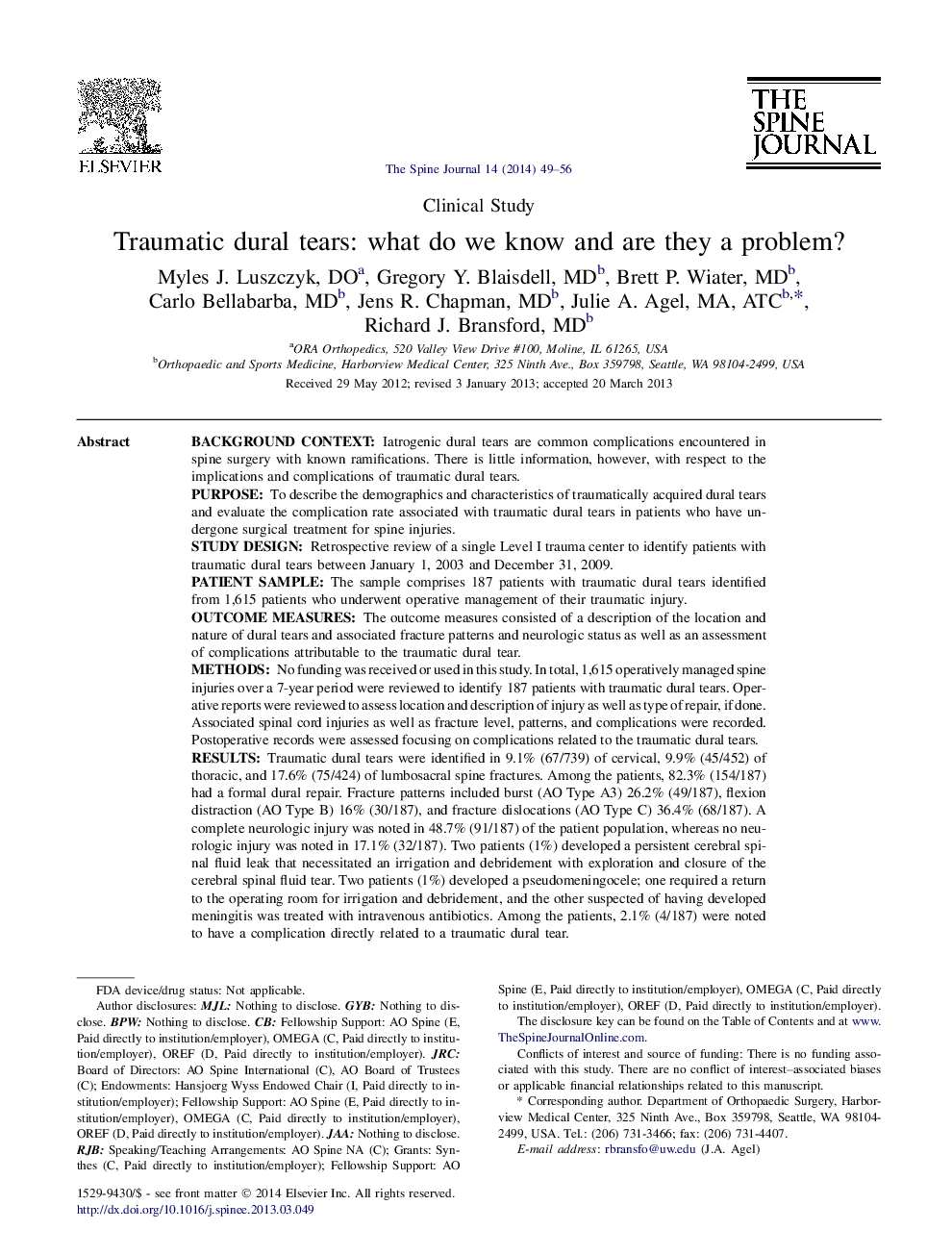| Article ID | Journal | Published Year | Pages | File Type |
|---|---|---|---|---|
| 6212598 | The Spine Journal | 2014 | 8 Pages |
Background contextIatrogenic dural tears are common complications encountered in spine surgery with known ramifications. There is little information, however, with respect to the implications and complications of traumatic dural tears.PurposeTo describe the demographics and characteristics of traumatically acquired dural tears and evaluate the complication rate associated with traumatic dural tears in patients who have undergone surgical treatment for spine injuries.Study designRetrospective review of a single Level I trauma center to identify patients with traumatic dural tears between January 1, 2003 and December 31, 2009.Patient sampleThe sample comprises 187 patients with traumatic dural tears identified from 1,615 patients who underwent operative management of their traumatic injury.Outcome measuresThe outcome measures consisted of a description of the location and nature of dural tears and associated fracture patterns and neurologic status as well as an assessment of complications attributable to the traumatic dural tear.MethodsNo funding was received or used in this study. In total, 1,615 operatively managed spine injuries over a 7-year period were reviewed to identify 187 patients with traumatic dural tears. Operative reports were reviewed to assess location and description of injury as well as type of repair, if done. Associated spinal cord injuries as well as fracture level, patterns, and complications were recorded. Postoperative records were assessed focusing on complications related to the traumatic dural tears.ResultsTraumatic dural tears were identified in 9.1% (67/739) of cervical, 9.9% (45/452) of thoracic, and 17.6% (75/424) of lumbosacral spine fractures. Among the patients, 82.3% (154/187) had a formal dural repair. Fracture patterns included burst (AO Type A3) 26.2% (49/187), flexion distraction (AO Type B) 16% (30/187), and fracture dislocations (AO Type C) 36.4% (68/187). A complete neurologic injury was noted in 48.7% (91/187) of the patient population, whereas no neurologic injury was noted in 17.1% (32/187). Two patients (1%) developed a persistent cerebral spinal fluid leak that necessitated an irrigation and debridement with exploration and closure of the cerebral spinal fluid tear. Two patients (1%) developed a pseudomeningocele; one required a return to the operating room for irrigation and debridement, and the other suspected of having developed meningitis was treated with intravenous antibiotics. Among the patients, 2.1% (4/187) were noted to have a complication directly related to a traumatic dural tear.ConclusionsTraumatic dural tears occurred in 11.6% of patients with operatively managed traumatic spine injuries at a regional Level 1 trauma center. In total, 83% had a neurologic injury and 49% had complete spinal cord injuries. Patients with traumatically induced dural tears have a low likelihood of developing a complication attributable to the dural tear.
